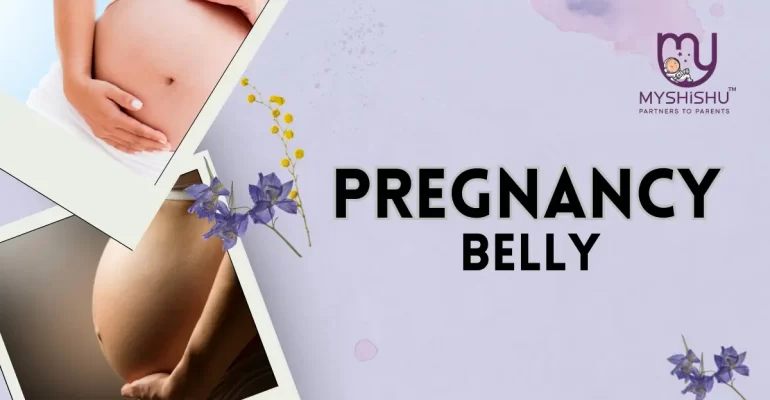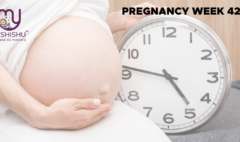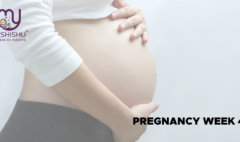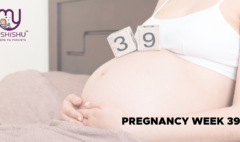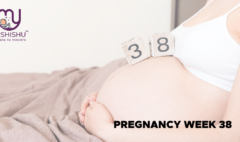Pregnant Belly Month By Month: A Comprehensive Guide
Pregnant Belly Month By Month: A Comprehensive Guide
Embark on a captivating journey through the miraculous transformations of a pregnant belly month by month. This blog delves into the profound changes expectant mothers experience, from the subtle beginnings of hormonal shifts to the unmistakable growth of the baby bump. Each trimester unfolds with its own set of emotions, challenges, and joys as the belly evolves alongside the precious life growing within. Explore the physical and emotional rollercoaster of pregnancy, from the early stages of anticipation to the final moments of readiness to welcome the new arrival. Join us as we celebrate the awe-inspiring journey of motherhood.
Introduction
Entering the realm of motherhood is an extraordinary journey, marked by the incredible changes happening within the body. At the heart of this transformation is the pregnant belly, a visible symbol of the new life growing within. In this blog, we’ll explore the evolution of the pregnant belly month by month, shedding light on the physical and emotional shifts that accompany each stage of pregnancy. From the delicate beginnings of conception to the radiant glow of the third trimester, each phase brings its mix of joys and challenges. Join us as we delve into the miraculous journey of the pregnant belly.
Table of Contents
What is a pregnant belly, month by month?
A pregnant belly, month by month, is a dynamic canvas of change and growth. In the early stages, it’s a subtle reminder of the profound transformations happening within, barely noticeable to the outside world. As the pregnancy progresses, the belly begins to round and expand, signaling the development of the baby and the stretching of the uterus. By the third trimester, it’s a prominent feature, showcasing the imminent arrival of the new addition to the family. Each month brings its unique shape, size, and sensations, offering a tangible representation of the miraculous journey of pregnancy.
Does the size or shape of your pregnant belly matter?
Does the size or shape of your pregnant belly matter? It’s a question that often lingers in the minds of expectant mothers as they navigate the transformative journey of pregnancy. In a society where images of the “ideal” pregnant belly abound, it’s easy to feel pressure to conform to certain standards. However, the truth is far more nuanced.
Every woman’s body is unique, and so too is her pregnancy experience. Factors such as height, weight, muscle tone, and the position of the baby all play a role in determining the size and shape of the belly. Some women may have a compact bump that seems to barely protrude, while others may have a more pronounced and round belly that draws attention. Neither is inherently better or worse than the other; they simply reflect the individual characteristics of each pregnancy.
It’s important to remember that the size and shape of your pregnant belly are not indicators of your worth as a mother or the health of your baby. Rather, they are physical manifestations of the incredible journey your body is undergoing to nurture and support new life. Whether your belly is small or large, round or more elongated, what truly matters is the health and well-being of both you and your baby.
Instead of focusing on external appearances, embrace the changes happening within your body and marvel at the miracle of life growing inside you. Celebrate the unique journey of your pregnancy and trust in your body’s ability to create and sustain life. Your pregnant belly is a beautiful testament to the incredible power of motherhood, regardless of its size or shape. So let go of any worries or insecurities and embrace the beauty of your growing bump with pride and joy.

What Affects The Appearance Of Your Pregnant Belly?
The appearance of your pregnant belly is influenced by a variety of factors, both physiological and external. Understanding these influences can help expectant mothers appreciate the uniqueness of their own pregnancy experiences.
- Body Composition: Your pre-pregnancy body composition, including factors such as height, weight, and muscle tone, plays a significant role in determining the shape and size of your pregnant belly. Women with a smaller frame or stronger abdominal muscles may have a more compact bump, while those with a larger frame or less muscle tone may show more prominently.
- Position of the Baby: The position of the baby in the uterus can affect the appearance of the belly. For example, if the baby is positioned towards the back (posterior position), the belly may appear more rounded and prominent. Conversely, if the baby is positioned towards the front (anterior position), the belly may appear flatter or more elongated.
- Number of Pregnancies: Women who have had multiple pregnancies may find that their belly looks different with each subsequent pregnancy. The abdominal muscles and ligaments may be more stretched or relaxed, leading to variations in the shape and size of the belly.
- Gestational Age: As the pregnancy progresses, the size of the belly naturally increases to accommodate the growing fetus. The rate of growth may vary from woman to woman and pregnancy to pregnancy, depending on factors such as genetics, nutrition, and overall health.
- Genetics: Genetic factors can also play a role in determining the appearance of your pregnant belly. You may notice similarities in the size and shape of your belly compared to other female relatives who have been pregnant.
- Maternal Age: Older mothers may experience changes in the appearance of their bellies due to factors such as decreased muscle tone and skin elasticity. These changes may result in a different overall appearance compared to younger mothers.
- Hydration and Bloating: Factors such as hydration levels and bloating can also influence the appearance of your belly. Drinking plenty of water and avoiding foods that cause bloating can help maintain a more comfortable and consistent belly size.
Ultimately, the appearance of your pregnant belly is a unique and individualized experience, shaped by a combination of physiological and genetic factors. Embrace the changes happening within your body and celebrate the beauty of your growing bump, regardless of its size or shape.
Your Muscle Tone
Your muscle tone, both before and during pregnancy, plays a significant role in shaping the appearance of your pregnant belly. Muscles, particularly the abdominal muscles, provide support for the uterus and help maintain the shape of the belly as it expands to accommodate the growing fetus. Here’s how muscle tone can influence the appearance of your pregnant belly:
- Pre-Pregnancy Muscle Tone: Women with strong abdominal muscles may experience a more compact and toned-looking belly during early pregnancy. These muscles provide a natural “corset” effect, helping to hold the uterus in place and minimizing the outward protrusion of the belly.
- Effect of Pregnancy on Muscle Tone: During pregnancy, the abdominal muscles undergo significant stretching to accommodate the growing fetus. This stretching can lead to a temporary weakening of the muscles, particularly in the later stages of pregnancy. As a result, some women may notice a more pronounced outward bulge or “baby bump” as the pregnancy progresses.
- Posture and Alignment: Good posture and alignment can also affect the appearance of your pregnant belly. Proper alignment of the pelvis and spine can help distribute the weight of the baby more evenly and prevent excessive strain on the abdominal muscles. Conversely, poor posture can contribute to a more pronounced belly protrusion and discomfort.
- Exercises to Maintain Muscle Tone: Engaging in regular exercise during pregnancy can help maintain muscle tone and support the growing belly. Prenatal exercises that target the abdominal muscles, such as gentle core-strengthening exercises and pelvic tilts, can help improve muscle tone and posture, reducing the risk of back pain and other discomforts.
- Postpartum Recovery: After childbirth, it’s important to gradually rebuild strength and tone in the abdominal muscles. Incorporating postpartum exercises, such as pelvic floor exercises and gentle core strengthening exercises, can help restore muscle tone and support abdominal recovery.
- Individual Variations: It’s essential to remember that every woman’s body is unique, and the appearance of the pregnant belly can vary widely from one person to another. Factors such as genetics, body shape, and overall health can also influence muscle tone and the way the belly looks during pregnancy.
Overall, maintaining good muscle tone before and during pregnancy can contribute to a healthier and more comfortable pregnancy experience. By incorporating targeted exercises and practicing good posture, you can help support your growing belly and minimize discomfort throughout your pregnancy journey.
Your Height
Your height can significantly influence the appearance of your pregnant belly throughout the different stages of pregnancy. Here’s how:
- Early Pregnancy: In the early stages of pregnancy, your height may not have a significant impact on the appearance of your belly, as the changes are primarily internal. However, taller women may have more space in their abdominal cavity, allowing the uterus to expand upward rather than outward initially.
- Mid-Pregnancy: As the pregnancy progresses, taller women may appear to carry their babies differently than shorter women. Taller women often have longer torsos, which can result in a more elongated-looking belly. This can sometimes make the pregnancy seem less noticeable, especially in the early to mid stages.
- Late Pregnancy: In the later stages of pregnancy, height can play a role in how the baby is positioned within the uterus. Taller women may have more room for the baby to grow upward, leading to a taller and more prominent belly. Conversely, shorter women may experience more outward protrusion of the belly due to limited vertical space.
- Overall Appearance: While height can influence the shape and size of the pregnant belly, it’s essential to remember that every woman’s body is unique. Factors such as body composition, genetics, and the position of the baby also contribute to the overall appearance of the belly during pregnancy. Regardless of height, embracing the changes happening within your body and celebrating the miracle of pregnancy is key to enjoying this transformative journey.
How Many Pregnancies You’ve Had
The number of pregnancies you’ve had can impact the appearance of your pregnant belly in various ways.
- Subsequent Pregnancies: Women who have had multiple pregnancies may find that their bellies appear differently with each subsequent pregnancy. The abdominal muscles and ligaments may be more stretched or relaxed, leading to variations in the shape and size of the belly. Additionally, the body may “remember” previous pregnancies, resulting in a belly that shows earlier or appears larger than during a first pregnancy.
- Muscle Tone: The number of pregnancies you’ve had can also affect the tone of your abdominal muscles. Women who have undergone multiple pregnancies may experience a gradual weakening of the abdominal muscles over time, especially if they haven’t actively engaged in exercises to strengthen these muscles postpartum. This can result in a belly that appears more relaxed or “pooched” compared to women with stronger abdominal muscles.
- Postpartum Changes: After each pregnancy, the body undergoes postpartum changes as it gradually returns to its pre-pregnancy state. The number of pregnancies you’ve had can influence the degree of postpartum recovery and how quickly your belly returns to its pre-pregnancy shape. Women who have had multiple pregnancies may find that their belly takes longer to bounce back, especially if they’ve experienced significant weight gain or abdominal separation (diastasis recti) with each pregnancy.
- Overall Appearance: While the number of pregnancies you’ve had can impact the appearance of your pregnant belly, it’s essential to remember that every woman’s body is unique. Factors such as body composition, genetics, and overall health also play a role in how the belly looks during pregnancy. Regardless of the number of pregnancies, embracing the changes happening within your body and celebrating the journey of motherhood is key to enjoying the transformative experience of pregnancy.

How Many Babies You’re Carrying
The number of babies you’re carrying, whether it’s one or more, can significantly influence the appearance of your pregnant belly and your overall pregnancy experience.
- Singleton Pregnancy: If you’re carrying one baby (a singleton pregnancy), your belly may appear more compact and evenly rounded compared to women carrying multiples. The size of your belly will gradually increase as your baby grows, with the shape typically conforming to the position of the baby within the uterus. While singleton pregnancies come with their own set of joys and challenges, the appearance of the belly tends to be more uniform and predictable.
- Multiple Pregnancy (Twins, Triplets, etc.): Carrying more than one baby (multiple pregnancy) can result in a larger and more prominent belly due to the presence of multiple fetuses. Women carrying twins, triplets, or more may notice a faster rate of belly growth and a more pronounced outward protrusion as the pregnancy progresses. The shape of the belly may also vary depending on the position and orientation of the babies within the uterus.
- Physical Discomfort: Carrying multiple can place additional strain on the body, leading to increased physical discomfort such as back pain, pelvic pressure, and difficulty with mobility. The larger size of the belly in multiple pregnancies can exacerbate these symptoms and make everyday activities more challenging.
- Prenatal Care: Women carrying multiples often require more frequent prenatal visits and specialized care to monitor the health and development of each baby. Ultrasounds and other diagnostic tests may be performed more frequently to assess the growth and well-being of the babies.
- Emotional Support: The prospect of welcoming multiple babies can evoke a range of emotions, from excitement and anticipation to apprehension and anxiety. It’s essential for women carrying multiples to have a strong support system in place, including healthcare providers, family members, and friends, to help navigate the unique challenges of a multiple pregnancy.
Regardless of whether you’re carrying one baby or more, every pregnancy is a remarkable journey filled with awe and wonder. Embrace the changes happening within your body and cherish the opportunity to bring new life into the world, knowing that each baby is a precious blessing.
Your Pregnant Belly Month By Month
Your pregnant belly undergoes remarkable transformations month by month, reflecting the incredible journey of pregnancy:
- Months 1–2: Concealed Growth: In the early weeks, your pregnant belly may not show any visible changes externally, but inside, significant developments are underway. The fertilized egg implants in the uterine lining, signaling the start of pregnancy. While your belly may appear unchanged to the outside world, hormonal shifts are laying the foundation for the growth to come.
- Month 3–4: The Emerging Bump: By the end of the first trimester, your belly may start to show signs of rounding as the uterus expands to accommodate the growing fetus. This is often referred to as the “baby bump” and marks a visible milestone in your pregnancy journey. While still subtle, the emergence of the bump brings a sense of excitement and anticipation as the reality of impending motherhood begins to sink in.
- Months 5–6: Blossoming Belly: As the second trimester progresses, your belly becomes more pronounced, and the baby bump takes center stage. The growth of your uterus accelerates, and you may notice a significant increase in belly size. This is often described as a time of radiant glow and increased energy as the initial discomforts of early pregnancy begin to fade away.
- Months 7-8: Full-Fledged Pregnancy: In the third trimester, your belly reaches its peak size, and the physical demands of pregnancy become more pronounced. Simple tasks may become more challenging as the growing belly puts pressure on your spine and internal organs. Despite the discomfort, there’s a sense of readiness and anticipation as you prepare to welcome your little one into the world.
- Month 9: Ready to Welcome Baby In the final month of pregnancy, your belly is at its largest and most prominent, a clear sign that the baby is almost ready to make its grand entrance. With every kick and movement, the baby reminds you that the journey of pregnancy is coming to an end and a new chapter of parenthood is about to begin.
Each month brings its own set of changes and milestones as your pregnant belly grows and evolves in tandem with your growing baby. Embrace the journey, marvel at the miracles unfolding within you, and cherish the precious moments of anticipation as you await the arrival of your little one.
Common Concerns About Belly Size
Common concerns about belly size during pregnancy often arise due to the perception of what is considered “normal” or “ideal.” Here are some common concerns and insights to address them:
- Belly Size Discrepancy: It’s common for pregnant individuals to compare their belly size with others, leading to concerns about being too small or too large. However, every pregnancy is unique, and factors such as body type, muscle tone, and baby position contribute to differences in belly size. Trust your healthcare provider’s assessments rather than comparing yourself to others.
- Small Belly: Some expectant mothers worry if their belly seems smaller than expected, fearing inadequate fetal growth or development. However, a small belly doesn’t necessarily indicate a problem. Factors such as a posteriorly positioned baby, strong abdominal muscles, or carrying a small or anteriorly positioned baby can contribute to a smaller-looking belly. Regular prenatal check-ups and ultrasounds can reassure you of your baby’s well-being.
- Large Belly: Conversely, a large belly may raise concerns about excessive weight gain, gestational diabetes, or macrosomia (a large baby). While these conditions can contribute to a larger belly, it’s essential to consider other factors such as genetics, amniotic fluid levels, and multiple pregnancies. Your healthcare provider can monitor your health and address any concerns through appropriate testing and management.
- Measuring Fundal Height: Fundal height measurement is a common method used to assess fetal growth and predict gestational age. However, discrepancies between fundal height and expected gestational age can cause anxiety. Factors such as maternal obesity, fetal position, and amniotic fluid volume can affect fundal height accuracy. Your healthcare provider will consider multiple factors when evaluating fetal growth and development.
- Concerns About Growth Restriction or Excess: Intrauterine growth restriction (IUGR) and macrosomia represent extremes of fetal growth, with potential implications for maternal and fetal health. However, many variations in belly size fall within the normal spectrum. Regular prenatal care, including ultrasound evaluations, helps detect and manage growth abnormalities, ensuring the best outcomes for you and your baby.
Ultimately, every pregnancy is unique, and variations in belly size are normal. Trust in the expertise of your healthcare provider, maintain open communication about your concerns and focus on nurturing your overall health and well-being throughout your pregnancy journey.

FAQS for curious moms-to-be
-
What month does the pregnancy belly start to show?
Typically, your bump becomes noticeable during your second trimester. Between 16-20 weeks, your body will start showing your baby’s growth. For some women, their bump may not be noticeable until the end of the second trimester and even into the third trimester. The second trimester starts in the fourth month.
-
What does a 1-month pregnant belly look like?
Will you have a belly at one month pregnant? You may experience some bloating at the beginning of pregnancy, and your clothes might fit a little snugly, but you probably won’t be showing a baby belly at one month pregnant. Read more about when you might start showing.
-
Does a pregnant belly feel soft?
Depending on your stage of pregnancy, your body type, and even the time of day, sometimes your belly will feel soft, and other times it will feel tight and hard. The reality is, there’s no normal to compare yourself with. Pregnant bellies come in all shapes, sizes, and firmness.
-
Why is my belly small at 7 months?
Tall women or women who have long torsos may have a smaller-looking bump, because they have more space for the baby to fill, lengthwise. Your baby is positioned in your uterus in a way that minimizes your bump. You have strong core muscles. Women with stronger cores tend to show later.
-
When does a baby start kicking?
When Will I Feel My Baby Kicking? You should feel your baby’s first movements, called “quickening,” between weeks 16 and 25 of your pregnancy. If this is your first pregnancy, you may not feel your baby move until closer to 25 weeks. By the second pregnancy, some women start to feel movements as early as 13 weeks.
Conclusion
In conclusion, concerns about belly size during pregnancy are common, but it’s essential to remember that every pregnancy is unique. Variations in belly size can be influenced by factors such as body type, baby position, and maternal health. Rather than comparing yourself to others, trust in the guidance of your healthcare provider and focus on nurturing your overall well-being. Regular prenatal check-ups, ultrasounds, and open communication with your healthcare team can provide reassurance and address any concerns. Embrace the journey of pregnancy with confidence, knowing that your body is beautifully adapting to support the growth and development of your precious baby.


